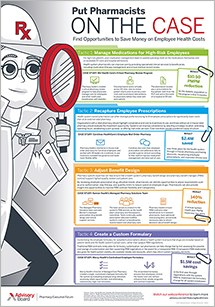Auto logout in seconds.
Continue LogoutHealth care costs account for a larger share of low-income U.S. residents' paychecks, though high-income residents spend more dollars overall, according to data from the Bureau of Labor Statistics (BLS).
Health Insurance 101: Get the slide decks
How much US residents spend on health care
According to BLS, U.S. residents in the country's lowest income decile spend 35% of their pre-tax incomes on health care, compared with 3.5% of U.S. residents in the country's highest income decile. However, individuals in the highest income decile spend the most dollars on health care, at an average of $8,720, compared with an average of $2,119 among individuals in the lowest income decile.
A separate Kaiser Family Foundation (KFF) analysis published this month showed how health care payments as a percentage of one's income can change based on health. For example, the analysis found U.S. residents with the lowest incomes who are enrolled in employer-sponsored health plans spend an average of about 13% of income on premiums and out-of-pocket costs if everyone on the plan is healthy. However, the number rises to nearly 20% if everyone on their plan is not healthy.
Meanwhile, research from the Commonwealth Fund found that the number of U.S. adults with employer-sponsored health plans who are deemed underinsured tripled between 2003 and 2018, and families who spent enough on health care to meet their deductibles saw those expenses almost double as a percentage of their incomes over the past decade.
Sara Collins, vice president of health care coverage and access at the Commonwealth Fund, said these trends "are driven by health care costs rising a lot faster than the median income."
Trends could be fueling push for 'Medicare-for-All'
Gary Claxton, Bradley Sawyer, and Cynthia Cox, who authored the KFF report, said these trends could be part of "what is fueling interest in proposals like Medicare for All and options for employers and/or workers to buy into Medicare."
Joseph Antos, a scholar at the American Enterprise Institute, noted that health care spending, just like any other type of spending, always will account for a higher percentage of a low-income person's income when compared with a high-income individual. However, he said the disparity between the share of income that high-income and low-income people pay for health care needs to be addressed, and stems from an employee insurance tax benefit called the tax exclusion.
"The idea of providing a subsidy to encourage people to get coverage on the job may not be a bad idea, but the way it's been implemented is to favor high-wage workers not low-wage workers," Antos said, adding, "It's inefficient and not fair. We should be helping lower-wage workers first" (Owens, "Vitals," Axios, 4/12; Luthi, Modern Healthcare, 4/15).
Health Insurance 101: Get the slide decks
Confused about the U.S. health insurance system? You're not alone—it's one of the most complicated systems in the world. If you missed our recent webconference series diving deep into the system, don't worry; we've got you covered.
Review the slide decks from our webconferences for a quick overview of each program:
Don't miss out on the latest Advisory Board insights
Create your free account to access 1 resource, including the latest research and webinars.
Want access without creating an account?
You have 1 free members-only resource remaining this month.
1 free members-only resources remaining
1 free members-only resources remaining
You've reached your limit of free insights
Become a member to access all of Advisory Board's resources, events, and experts
Never miss out on the latest innovative health care content tailored to you.
Benefits include:
You've reached your limit of free insights
Become a member to access all of Advisory Board's resources, events, and experts
Never miss out on the latest innovative health care content tailored to you.
Benefits include:
This content is available through your Curated Research partnership with Advisory Board. Click on ‘view this resource’ to read the full piece
Email ask@advisory.com to learn more
Click on ‘Become a Member’ to learn about the benefits of a Full-Access partnership with Advisory Board
Never miss out on the latest innovative health care content tailored to you.
Benefits Include:
This is for members only. Learn more.
Click on ‘Become a Member’ to learn about the benefits of a Full-Access partnership with Advisory Board
Never miss out on the latest innovative health care content tailored to you.

